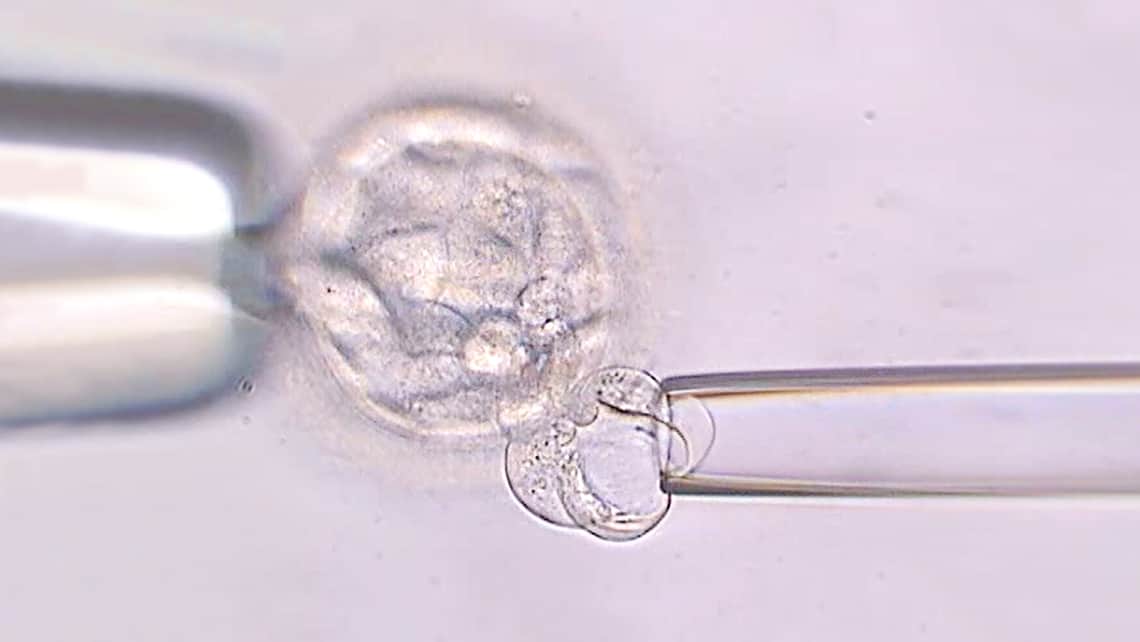
PGD, PGS, CCS and PGT-A: are they all one and the same?
PGD or pre-implantation genetic diagnosis consists of a set of techniques used on the embryo prior to transfer to the mother’s uterus with the aim of studying any possible chromosomal and/or genetic abnormalities. Its purpose is to ensure that children are born healthy and put an end to the transmission of a given condition to offspring.
Huge steps forward in the analysis of embryo abnormalities have been made in the 21st century. The range of options in diagnosis as well as the reliability of the techniques have turned something that was a pipe dream only a few years ago into a reality. These techniques are now routine and Instituto Bernabeu is a worldwide leading entity in providing its patients with the latest developments in embryo genetic diagnosis.
This revolution has led to the emergence of a large number of new tests, the majority of which are known by their acronyms. In many cases, they have turned PGD into mumbo jumbo for patients who end up mixing them all up and getting them all confused. We would like to use this forum to shed a bit of light on this ocean of acronyms.
Before getting stuck right into the matter, we should point out that all types of PGD have one stage in common: embryo biopsy. Embryos generated during in vitro fertilisation techniques (whether this be with the patient’s own oocytes or donated ones) are biopsied preferably on day 5 following fertilisation. The cells that are removed are analysed in our Molecular Biology and Genetics department (IB Biotech) with the aim of understanding if they contain any genetic or chromosomal abnormalities.
Índice
Types of pre-implantation genetic diagnosis (PGD):
Pre-implantation genetic diagnosis for monogenic diseases (PGT-M):
This consists of embryo genetic analysis in couples who are carriers of a hereditary disease. The aim is to transfer only embryos that are free of this pathology to the uterus. Whilst the term PGD has been used to refer to all embryo diagnosis techniques, it is often used to refer only to the analysis of monogenic diseases. As a result, PGD and PGD for monogenic diseases have become synonyms.
A new term has recently been coined in order to refer to this type of genetic analysis (PGT-M): Pre-implantation genetic test for monogenic diseases.
PGS: Pre-implantation genetic screening or aneuploidy screening.
One of the main reasons for poor pregnancy rates in humans is abnormalities in the number of embryo chromosomes (embryo aneuploidy). Pre-implantation genetic diagnosis can be used to improve the outcome for couples. Only embryos with the exact number of chromosomes can lead to the birth of a healthy child. All others end in embryo arrest, pregnancy loss or a child with a malformation.
The problem is worse in patients who are carriers of structural chromosomal abnormalities. Human chromosomes have specific characteristics in terms of shape, structure and size. Following patient karyotype analysis, it is possible to determine if certain regions of chromosomes are in an incorrect position (structural abnormalities). Genetic make-up can be correct and complete but in these cases it is disorganised. This does not usually have an impact on the patient’s daily life. However, it may cause issues when having children because the gametes (ova or spermatozoa) may have an abnormal chromosomal make-up that, on most occasions, will lead to pregnancy loss.
There have been a number of different versions of this type of PGD over the years:
- PGS-1: The first of them used the fluorescence in situ hybridisation (FISH) diagnosis technique. Only a limited number of chromosomes can be analysed using this method – 9 out of the 23 chromosomes in humans were diagnosed. This type of incomplete analysis is practically no longer used.
- PGS-2 or CCS: Embryo comprehensive chromosome screening (CCS) is currently carried out. In other words, all 23 chromosomes that humans have are analysed. The most common technique for this kind of analysis is array CGH (comparative genomic hybridisation). It uses the relationship between the embryo’s DNA and a control DNA to detect changes in the quantity of any of the embryo’s chromosomes. Next generation sequencing (NGS) is alternative technology with which the future baby’s entire chromosomal make-up can be analysed. This technology is superseding array CGH due to the fact that it is much more sensitive and cheaper to perform.
- PGT-A (pre-implantation genetic test for the analysis of aneuploidies): this is the latest term that has been assigned to comprehensive chromosome analysis (CCS). We would hope that this new name will stick and not help to create even more confusion within the acronym mumbo jumbo.
Instituto Bernabeu’s medical team is available for all the aforementioned types of PGD. Having a team of staff and the very latest technology in order to carry out these techniques in our own facilities means we are able to offer patients the very best quality standards in the results obtained whilst decreasing the time taken and also auditing the entire process. Furthermore, at Instituto Bernabeu, we have a unit that specialises in genetics and reproduction guidance where couples with a background of illnesses of any kind are given advice. The unit analyses each case individually and recommends the most appropriate option for a given medical background with the aim of achieving every couples’ desire to bring a healthy child into the world.
Dr José A. Ortiz biochemist at IBBIOTECH, part of the Instituto Bernabeu group.
